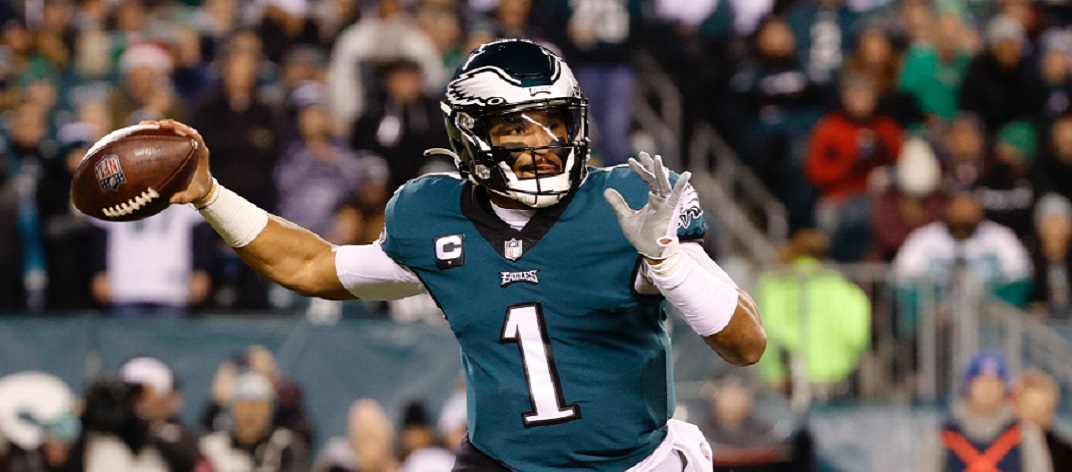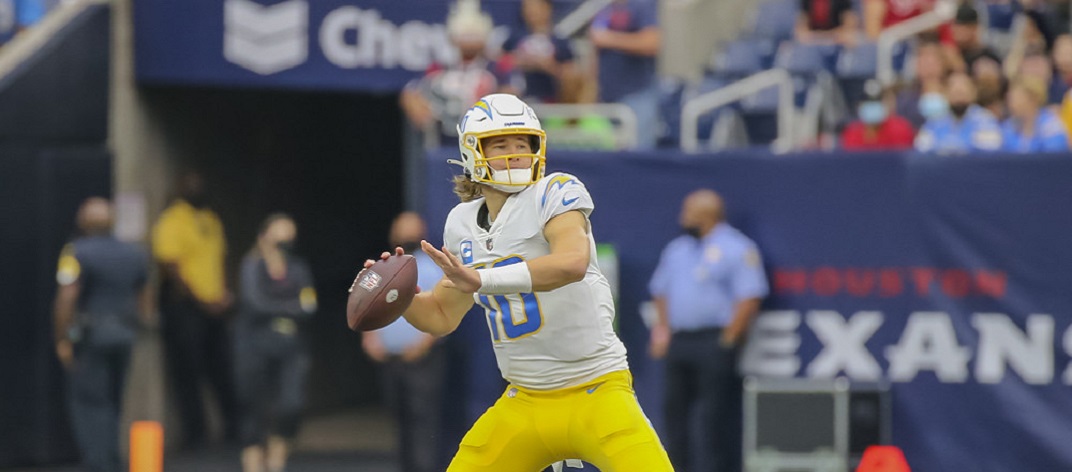On Target: Target Hogs
By Davis Mattek
In my first On Target column, I explained the concept of Market Share. It’s the idea that the percentage of a teams pass attempts that are aimed at a player is more relevant than the raw number of targets that a player sees. On a week-to-week basis, raw target numbers are hard to predict, but by combining market share numbers and Vegas lines, we can get a good sense of game script and therefore predict a player’s usage during a game. If a team is a +4 underdog and the game has a relatively high spread, we can use his Market Share to realize that he will be a good play. More targets is always better for a pass catcher, and Market Share can aid us in finding players who have been victim of unfavorable game script (or who have been benefited by positive game script thus far) and improve the accuracy of our prognostications. These are four players who are garnering massive amounts of their teams’ targets and who are undervalued by the fantasy football market.
Jordy Nelson, Green Bay Packers
All of the wide receivers on this list are garnering more than 27 percent of their teams targets. After five weeks of football, 30 percent of a team’s pass attempts is an astronomical number to be receiving. That means in a normal game with a reasonable spread, we can set the baseline at 10 targets for these players. Nelson, in particular, was a favorite of shark drafters in preseason as he was sometimes sneaking up to the beginning of the second round in high-stakes league. Nelson plays with the best quarterback in football and should be considered the No. 1 or 2 wide receiver in fantasy. In seasonal leagues, there are almost no players I wouldn’t trade for Nelson if the owner felt like he was performing over his head. With Eddie Lacy doing his best Trent Richardson impersonation against any good run defense, no tight end threat, and spotty play in between the 20s from Randall Cobb, I actually expect Nelson to keep up his current pace. As an example trade, if I had Calvin Johnson, I would offer Megatron and any weak RB2 (Matt Asiata, Chris Ivory and so on and so forth) to acquire Nelson and in daily fantasy, if he isn’t the top-priced wide receiver, he will be a weekly top option. Opportunity matters more than almost anything in daily fantasy, so Nelson will be a mainstay in my lineups the entire season.
Kelvin Benjamin, Carolina Panthers
Benjamin just had a no good, awful, horrible day against the Bears. He dropped an absolute dime from Cam Newton for a 30-yard gain, got wide open in the endzone and lost track of the ball in the air and got a DPI called in the endzone on a play where the ball was in his left hand. It could have been a huge day, but concentration issues and weak hands injured his fantasy points. That said, I’m still super encouraged by what I’ve seen from KB thus far. Benjamin is receiving 27 percent of his team’s targets and more impressively, 34 percent of the team’s non-TE targets. His schedule for the next several weeks isn’t easy, but his weeks 9-17 schedule are one of the easiest for any wide receiver in the league. Whether you buy into Benjamin is a philosophical question. He’s shown a lot of the problems he exhibited in college with his drops and inconsistency, but he is also the unquestioned top target on his team and is basically always open due to his size and speed. My fantasy football lean will always be to take the more talented players, especially oversized wide receivers, so I’ll be buying as much Benjamin stock as I can. His target volume will mean he’s at least a WR2 week-to-week, even if he isn’t quite as a talented as my evaluation is showing at the time and if we build fallibility into our projections and decisions, it is pretty hard to lose.
Brain Quick, Saint Louis Rams
Quick is a really interesting case for fantasy football and how we determine opportunity. He is tied for 31 targets with Jared Cook but is receiving 39 percent of the team’s WR targets. Thirty-nine percent! Basically, when Austin Davis drops back and is looking to the sidelines or downfield, it’s a +EV bet that it’s going to go to Quick. A lot of people still don’t believe in Quick’s talent because he took so long to develop, but it’s not entirely uncommon for oversized wide receivers from small schools to take several years to become NFL starters. The comp that everyone will make is Vincent Jackson because it took him four seasons to become a fantasy starter. Quick isn’t the physical freak that Vjax is/was and his quarterback, while certainly possessing moxie, is no Philip Rivers. I’m buying Quick in every league because there is an attitudinal discrepancy between the stats he is providing week to week and the way in which the fantasy football market is valuing him. This often happens with players who are grabbed off the waiver wire in week 1. Those who grab the players are waiting for them to fall off and be relegated to their fantasy bench; we, as savvy players, should take advantage and trade for players who are expected to keep up starter-worthy performances.
Matt Forte, Chicago Bears
Matt Forte only has a 3.9 yards per carry and zero rushing touchdowns, yet is still a premiere fantasy star. This is primarily due to the genius of Marc Trestman, the man who harnesses his players best talents and unleashes them on the rest of the NFL. Forte is only receiving 16 carries per game, but is tied for the team lead with 42 targets, or 21 percent of the team’s total passing volume. There was a little concern before the season about Forte slowing down as a runner, and he most certainly has through five games, but Trestman was two steps ahead of us. He predicted that Forte would be less productive as a runner and has increased his usage as a receiver to help compensate not only for his declining running ability but also for the health struggles of Brandon Marshall and Alshon Jeffery. As an example of a way to get Matt Forte, if there were anyway I could get rid of Eddie Lacy for Forte (even with a pot sweetener along the lines of Roddy White), I would run to click accept. Year after year, pass-catching running backs do much better than their first- and second-down counterparts, and Forte is a prime example of receptions meaning more than rushing yards.


